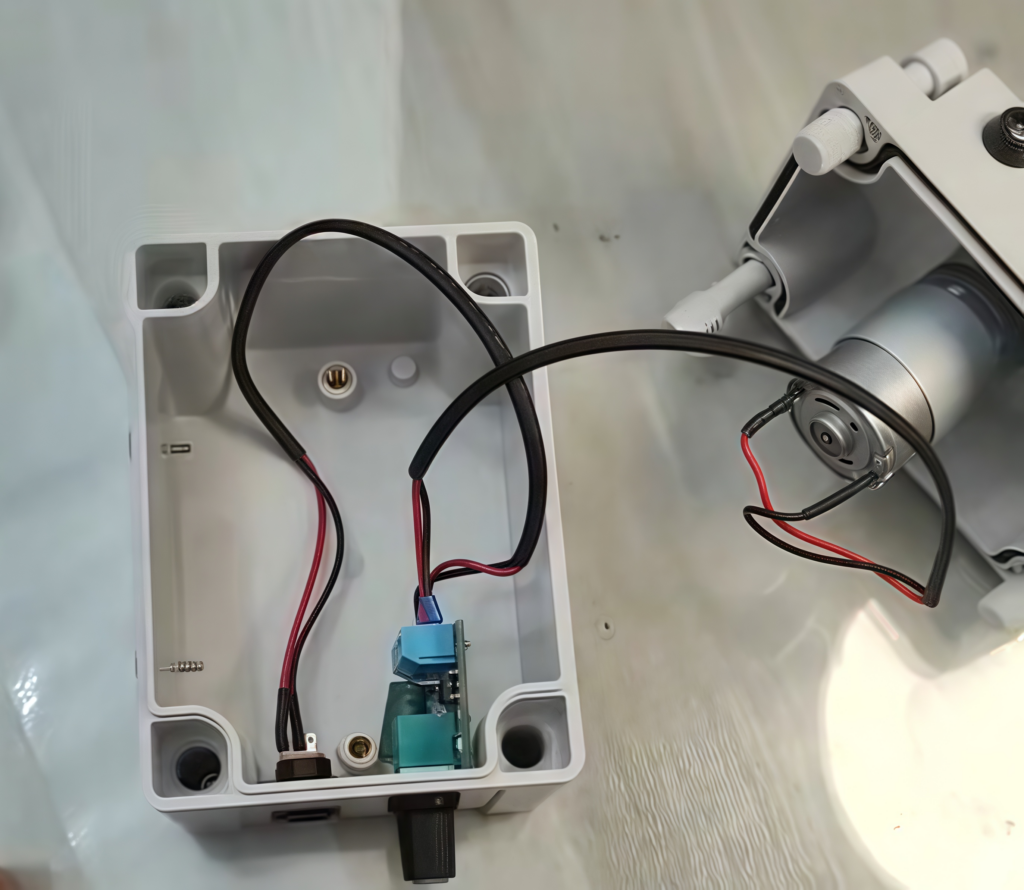1. Basic Troubleshooting Process
When a simple peristaltic pump stops working, the issue is often either the motor or the speed controller board.
Power-Off Inspection
Check if all wiring is connected properly.
Look for signs of overheating or burnt smell.
Direct Power Test
Connect the motor directly to a power adapter:
If the motor runs normally → Controller board is faulty.
If the motor doesn’t run → Motor is defective.
2. Step-by-Step Troubleshooting Guide
2.1 Direct Motor Power Test
Tools Needed: Multimeter, insulated gloves, screwdriver
Steps:
Turn off power and disconnect all wires.
Remove the terminal cover of the motor.
Connect the motor’s leads directly to a DC adapter (check polarity).
Power on and observe rotation.
Diagnosis:
✅ Smooth rotation → Controller board is faulty.
❌ No rotation or stalling → Motor is defective.
2.2 Speed Controller Board Inspection
Visual Inspection:
Burn marks
Bulging capacitors
Cracks or loose solder joints
Voltage Measurement:
Use a multimeter to measure input and output voltages.
Component Replacement:
If capacitors or voltage regulators are damaged, replace them with soldering tools.
3. Speed Controller Board Disassembly Video
Search YouTube:
“Simple peristaltic pump speed controller board disassembly”
Safety Tips:
Always disconnect power before disassembly.
Use an anti-static wrist strap when handling the board.
Conclusion
Using the methods above, you can efficiently identify if the issue lies in the motor or controller board. If necessary, follow video guides to complete your repair safely.


